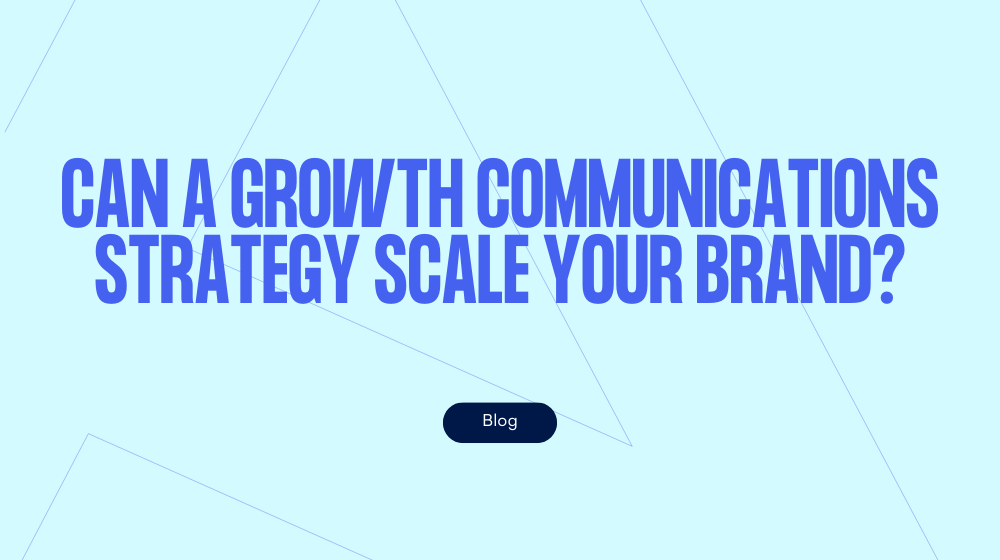To scale a business quickly, you need a communications strategy that helps to make the most of the most of the other growth activities you invest in, like hiring new employees, or selling into new markets. Growth marketing communications isn’t witchcraft – it should be informed by your overarching business strategy – and yet few brands align the two.
As an agency that specialises in PR, marketing and lead generation – rather than just one or two of them – we’re in the rare position of being able to take a 360-degree look at the comms of the brands we work with. What’s most telling about that is how many businesses have a complete blind-spot in one area or other.
The right communications mix varies from brand to brand, but every brand should consider all elements of the mix. For those that are targeting fast growth, this is absolutely critical.
Fast-growing brands have to optimise their comms activity to make the most of any other investment they are making in growth. If they don’t, they’re throwing money away at best and, at worst, putting themselves out of business more quickly than is rectifiable.
As these brands are often laying the train tracks they’re travelling on, fast-growing also has to mean fast-changing. It’s not always clear what direction a brand’s growth might take it in, so it’s important that their comms activity is flexible and all options are available. For example, you don’t want to be suddenly having to develop a PR strategy on-the-fly because you hadn’t needed one before.
Test, track, iterate
To know what activities you need, you need to test, track and iterate. If you know your offer, market and positioning well, you should be able to identify which activities are likely to perform well. Some will always work better than others of course, so you should be prepared to fail fast and try other activities if needs be.
The key to this approach is data. Your data should inform the activities you test, which you invest most in and which you drop if they’re not getting the results you need. It can also be used to automate elements of your comms approach to not only make it more efficient, but to make it more effective too. For example, automated PPC can not only save you the time and effort of identifying keywords to target and creating ads to run, but can identify the optimal keywords and create optimised ads.
Maximising ROI
There’s one other big reason that fast-growing brands should take a holistic approach to their comms. Because of the way in which PR, marketing and lead generation activities can support one another, additional activities don’t just bring their own value, but improve the value of other activities too.
PR benefits marketing by generating new audiences for targeted activity and benefits lead gen by raising awareness of brands and their offers. Marketing benefits PR by developing and providing brand focus and messaging and benefits lead generation by targeting audiences with tailored activity. Lead gen benefits PR by turning brand awareness into real contacts and benefits marketing by maximising return on marketing investment. In short, when you get it right, full mix comms is greater than the sum of its parts.
Photo by Jungwoo Hong on Unsplash




